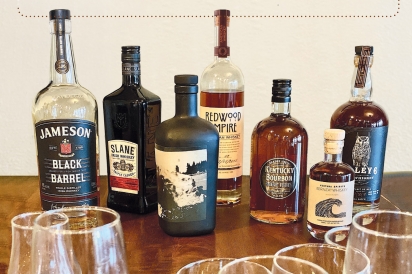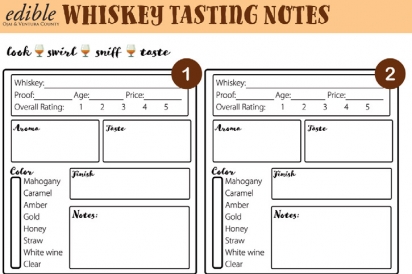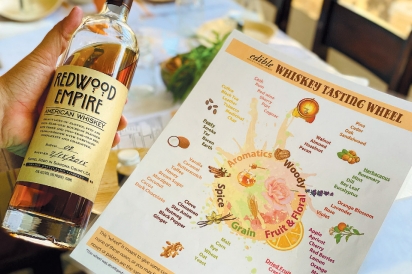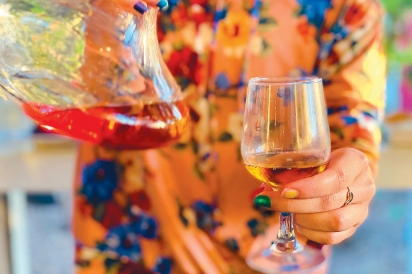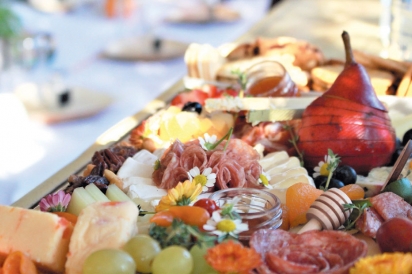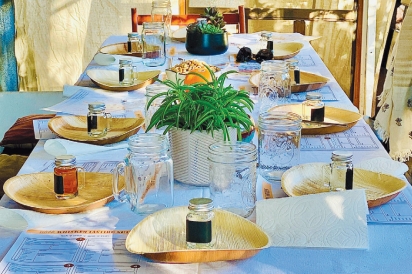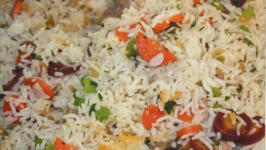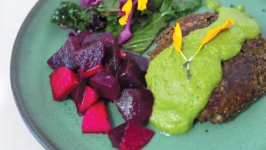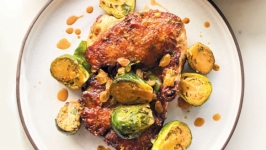Whiskey 101: How to Host a Tasting
Love it or hate it, whiskey is on trend. But how does a whiskey newbie know which whiskey they like, or if they even like whiskey at all? We put together the best ideas and tips we could find to make hosting a whiskey tasting party a breeze.
Start with a Theme
As exciting as it is to “try all the things,” tasting more than six to eight whiskeys might make for a challenging next morning. Whiskey is easy to theme; try any of these:
Bourbons—Bourbon is an American whiskey made with at least 51% corn and aged in oak barrels. It is typically slightly sweeter than a rye and is often characterized by smooth caramel and vanilla flavor notes.
Ryes—Typically these are made with at least 51% rye mash and can refer to an American rye or Canadian whiskey. Strangely, there is no guarantee that the Canadian whiskey will actually contain any rye, though it did historically. Flavor notes are usually a little peppery and spicy.
Scotch—As indicated by its name, Scotch whiskey is made exclusively in Scotland and aged in oak barrels for at least three years. Originally made from all malted barley, now some Scotch is made with wheat and rye or a blend. Flavor notes can be nutty, fruity, sherry or peaty.
Irish—Potentially the originator of all whiskeys (the very word comes from the Irish uisce beatha, translated “water of life”), Irish whiskey, as expected, is made in Ireland and contains malted cereal grains and is aged in wooden casks for a minimum of three years. A seasoned taster can easily distinguish an Irish whiskey by its unique light and fruity flavor profile.
Canadian—Whiskeys made exclusively in Canada and are most often blends of single-grain spirits that could include corn, rye, wheat or barley. They are aged in wooden barrels, which can create a variety of flavors depending on the wood used and blended. Flavors can be added but most often end up being smooth, light and sweet.
Japanese—These whiskeys follow the tradition of Scotch and are made with malted barley and aged in wooden barrels that could be wine or sherry casks, white or Spanish oak or bourbon barrels. Flavors tend to show as dry, smokey and peaty.
Regional or Around the World—This theme compares whiskeys from anywhere and may help narrow down favorites for those who are just getting started.
Ages—Whiskey can be aged nine months to 15 years. One theme can be to taste only 12-year-aged whiskey. This is recommended for more experienced tasters.
Price point—This can be added to any of the other themes. It is merely a way to taste similarly priced whiskeys. A common range of whiskey prices can be from $14 to $150 per 750 ml bottle.
Advance Planning
Decide how you will obtain the whiskey. Once you have picked a theme, we suggest you ask your guests to each bring one bottle from that theme. They will take their bottle back home at the end of the tasting, unless they want to trade with someone else.
Decide on a menu. Whiskey pairs very well with cheese, charcuterie, nuts, chocolate and meat. While a lovely charcuterie tray can be made at home, Ventura County boasts many wonderful companies that provide beautiful platters sized to the number of guests you have and can easily modify orders to contain more vegetables, be vegan or vegetarian or even color or seasonally themed. (Pictured on page 40 @cheeseplease_805 based in Simi Valley.)
Decide if your tasting will be blind. Doing a blind tasting can be fun for both the beginner and the more seasoned taster. This simply means that your guests will not know which whiskey they are tasting until the reveal at the end. It is helpful to have an extra person to pour and a fun unlabeled bottle to pour from.
Set your guest list. Most tastings do very well with a smaller group, allowing for discussion of notes and a manageable crowd. It is best to limit your tasting to 8–10 people.
Pick a location and set a date/time. These days, it is a good idea to hold parties outdoors if possible. If not, try to set up your event in a large open space with a table for food and plenty of seats. One option might be to share hosting responsibilities, with one person offering the location and another doing the legwork to make the party happen. It is a good idea to give guests about four weeks’ lead time. Consider having the party on a Saturday afternoon, starting between 3:30–4:30pm. This gives guests time afterwards to process the alcohol and allows for a day to recover, if needed. Feel free to use our invitation and then clarify details in an email.
Prepping Ahead
Safety note: Plan for guests to have a designated driver or to Lyft or Uber to the event.
■ Print out Tasting Notes and the Whiskey Wheel (available on our website to down load for free), or use the wheel on page 38.
■ Have pens and pencils ready for your guests.
■ Pick tasting glasses. These can be purchased or, if you already own fluted glasses (wine or otherwise), these can be set out for guests to choose from as they come in.
■ Provide straws or spoons for guests to add small amounts of water to their tastings.
■ Optional: Purchase small (2-ounce) sealable glasses/jars that will allow guests to take home a dram-worth of their favorite whiskey. These also serves as party favors.
Party Time!
FOR THE HOST: During a whiskey (or other spirits) tasting there are a few things to keep in mind to keep everyone happy and safe:
• As the host, it is helpful to consult an expert or check the internet for tasting notes of the whiskeys when setting the order. Plan to start with the lighter, sweeter flavors and end with heavier, smokey and spicy whiskeys.
• Keep the pours small. Each pour should only be about 1 ounce. Just enough to taste. Offer a bucket or large glass to dump extra whiskey after each taste. (This won’t often get used, but it is important to have the option.)
• Supply lots of water. Not only is water a great palate cleanser between tastings, it helps keep guests hydrated, very important during any alcohol consumption.
• Keep food available and easily accessible. It is helpful to offer food before the tasting begins so that the guests are not tasting on an empty stomach. Leaving bowls of nuts and fruits on the tasting table is also helpful for palate cleansers.
• Supply nonalcoholic options for designated drivers or nondrinking guests. Kombucha, ginger beer and PureWild are all great options.
FOR GUESTS:
• Swirl. Look. Sniff. Sip. To experience the depth of smell and flavor of a whiskey, it is important to spend a bit of time on each of the four steps. Be creative in your descriptions and feel free to discuss it with other guests as you taste.
• Sometimes it is fun to add a few drops of water or an ice cube to the whiskey after it has been tasted neat, to see if there is a change in the flavor profile.
Editor’s note: These party planning tips can be used for any kind of spirits tasting.
Click here for free downloads of the Whiskey Tasting Wheel, Notes and Invitation PDFs.



